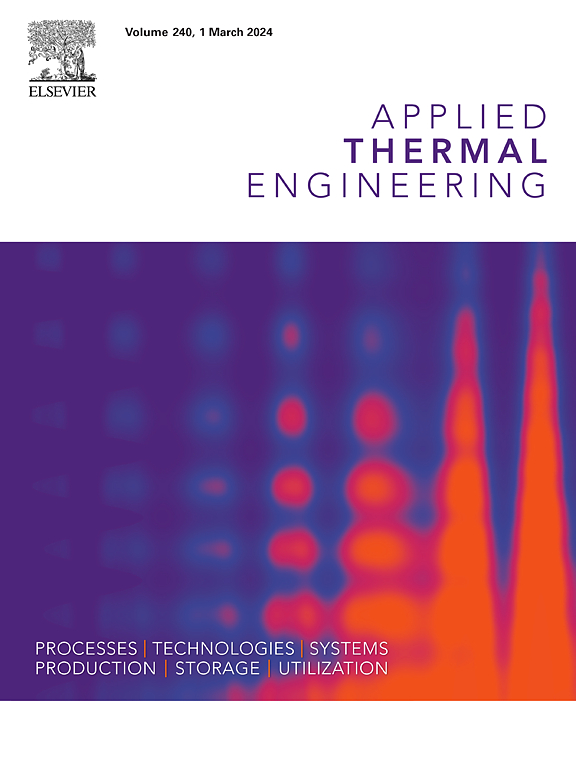Study on the effect of the porous media equivalent particulate fouling model on heat transfer performance in heat exchanger channels
IF 6.1
2区 工程技术
Q2 ENERGY & FUELS
引用次数: 0
Abstract
With the development of modern industry, the issue of particulate fouling deposition within heat exchanger channels has become increasingly severe, significantly reducing heat transfer coefficient and potentially leading to hazards such as tube rupture and low efficiency. To investigate the impact of particulate fouling on heat transfer performance in heat exchanger channels, this paper proposes a porous media equivalent particulate fouling model, which has been experimentally validated for accuracy. The model is applied to both smooth and complex heat exchanger channels, with a comparative analysis focusing on the changes in fouling resistance and Nusselt number between the porous media equivalent particulate fouling model and the traditional particulate fouling model. Additionally, the study provides a detailed examination of the effect of fouling layer thickness on heat transfer performance in complex channels. The results indicate that the simulation results using the porous media equivalent particulate fouling model show a higher correlation with experimental data, with the average error reduced by 5.48 %. In both smooth and complex heat exchanger channels, fouling resistance increases progressively along the channel, while the Nusselt number decreases. In the complex channel, due to the influence of vortex generators, fouling resistance and Nusselt number exhibit periodic variations. When the porous media equivalent particulate fouling model is used, the obstruction effect of the fouling layer on the flow field is considered, resulting in a significant increase in fouling resistance, which in turn reduces the Nusselt number. Furthermore, in the complex channel, as particle concentration increases, the fouling layer thickness gradually increases. When the fouling layer reaches a thickness of 0.42 mm, the heat transfer efficiency decreases by 12.1 %, while flow resistance increases by 36.0 %.
求助全文
约1分钟内获得全文
求助全文
来源期刊

Applied Thermal Engineering
工程技术-工程:机械
CiteScore
11.30
自引率
15.60%
发文量
1474
审稿时长
57 days
期刊介绍:
Applied Thermal Engineering disseminates novel research related to the design, development and demonstration of components, devices, equipment, technologies and systems involving thermal processes for the production, storage, utilization and conservation of energy, with a focus on engineering application.
The journal publishes high-quality and high-impact Original Research Articles, Review Articles, Short Communications and Letters to the Editor on cutting-edge innovations in research, and recent advances or issues of interest to the thermal engineering community.
 求助内容:
求助内容: 应助结果提醒方式:
应助结果提醒方式:


